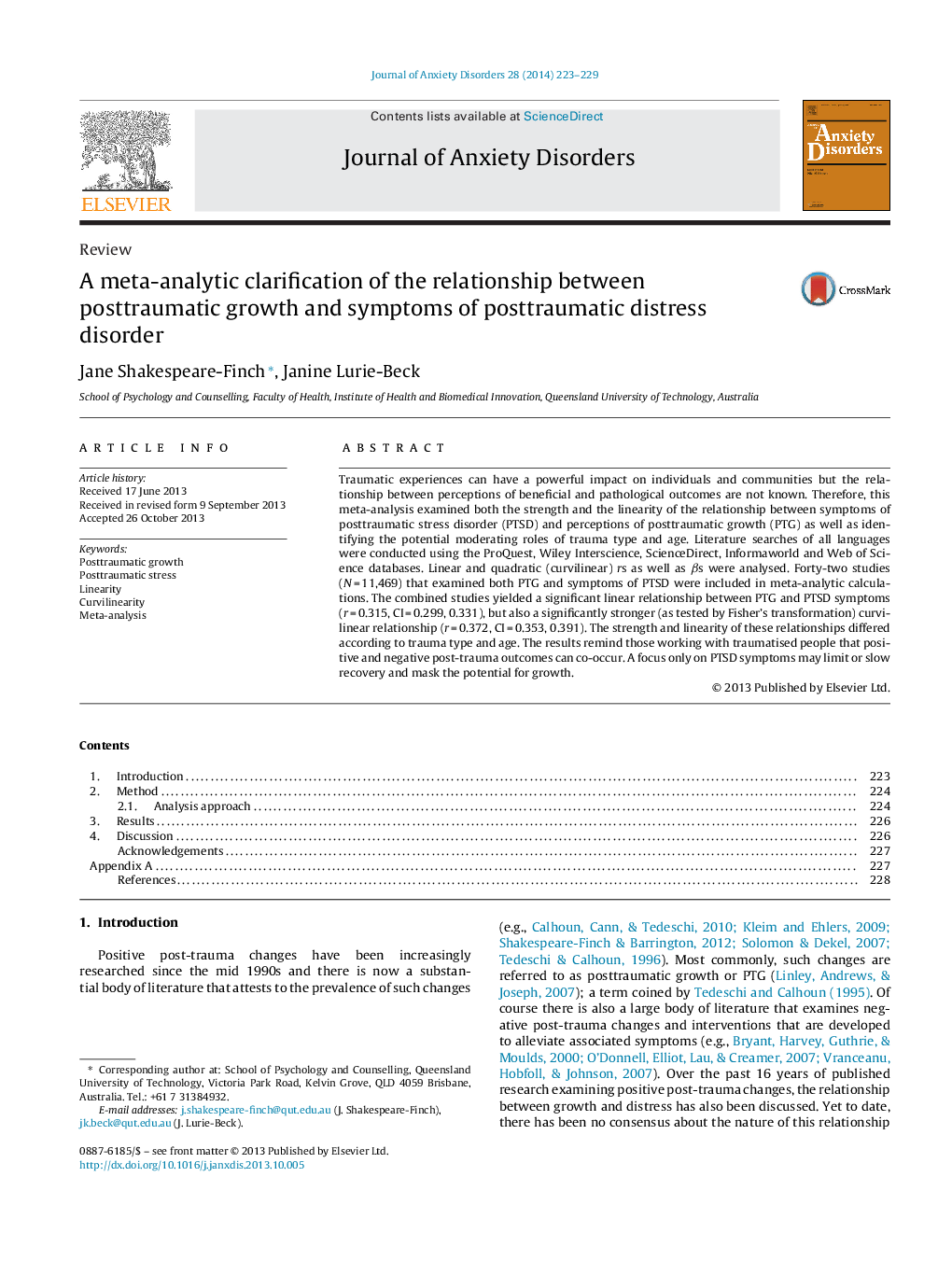| Article ID | Journal | Published Year | Pages | File Type |
|---|---|---|---|---|
| 909416 | Journal of Anxiety Disorders | 2014 | 7 Pages |
•Meta-analysis of relationship between posttraumatic stress disorder symptoms and posttraumatic growth.•Clarification of linear versus curvilinear relationship between posttraumatic stress disorder symptoms and posttraumatic growth.•Delineation of differences in nature of this relationship by trauma type and age group.
Traumatic experiences can have a powerful impact on individuals and communities but the relationship between perceptions of beneficial and pathological outcomes are not known. Therefore, this meta-analysis examined both the strength and the linearity of the relationship between symptoms of posttraumatic stress disorder (PTSD) and perceptions of posttraumatic growth (PTG) as well as identifying the potential moderating roles of trauma type and age. Literature searches of all languages were conducted using the ProQuest, Wiley Interscience, ScienceDirect, Informaworld and Web of Science databases. Linear and quadratic (curvilinear) rs as well as βs were analysed. Forty-two studies (N = 11,469) that examined both PTG and symptoms of PTSD were included in meta-analytic calculations. The combined studies yielded a significant linear relationship between PTG and PTSD symptoms (r = 0.315, CI = 0.299, 0.331), but also a significantly stronger (as tested by Fisher's transformation) curvilinear relationship (r = 0.372, CI = 0.353, 0.391). The strength and linearity of these relationships differed according to trauma type and age. The results remind those working with traumatised people that positive and negative post-trauma outcomes can co-occur. A focus only on PTSD symptoms may limit or slow recovery and mask the potential for growth.
